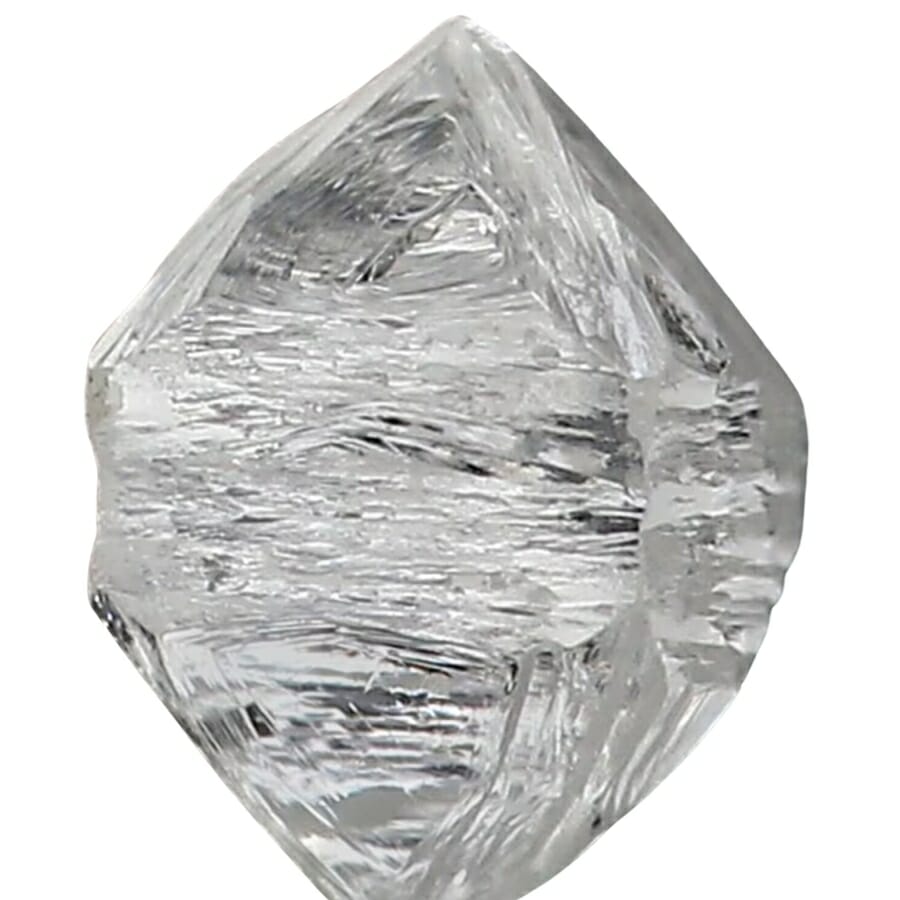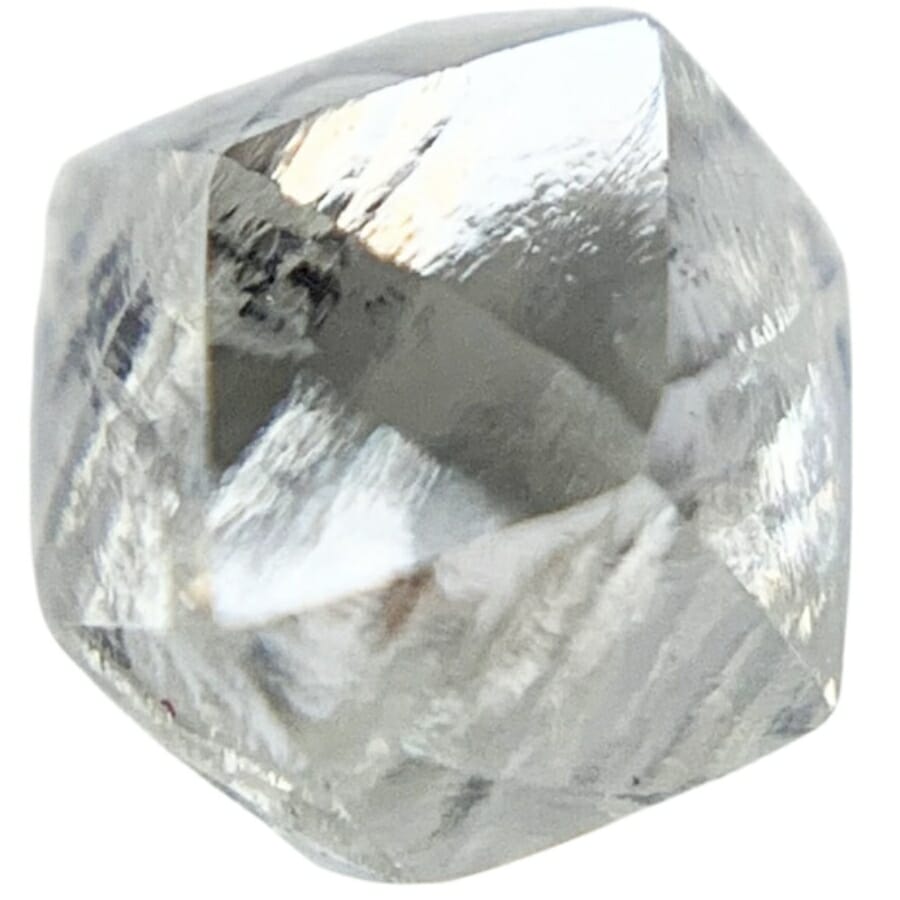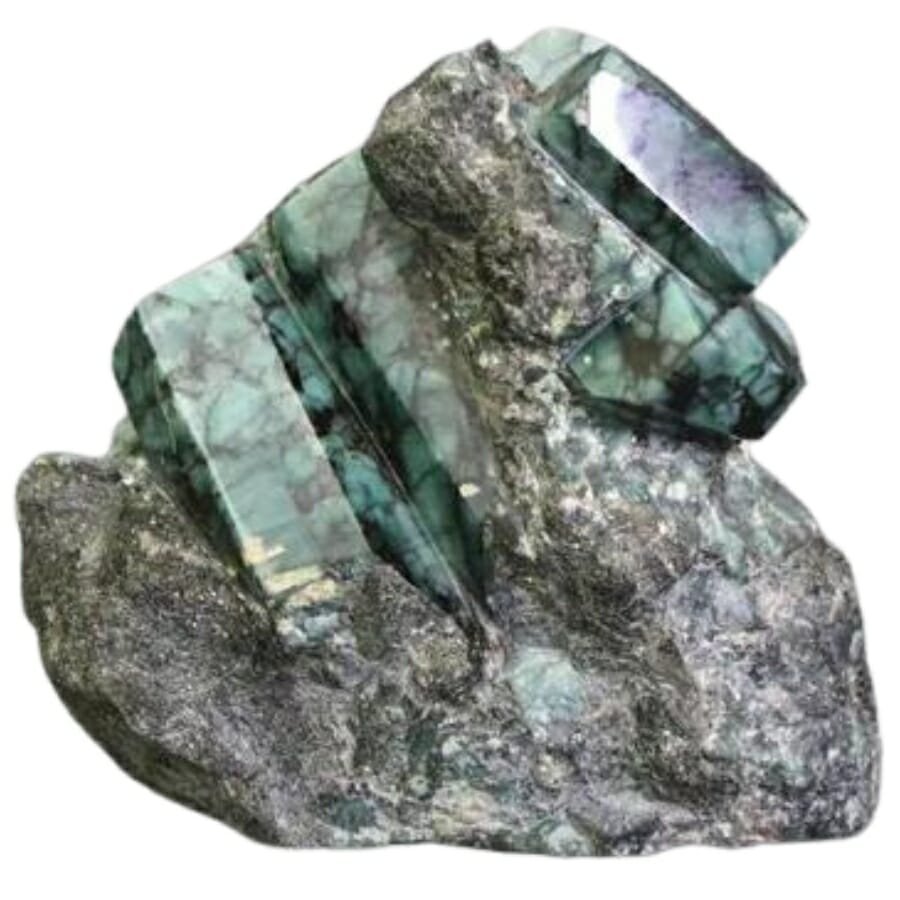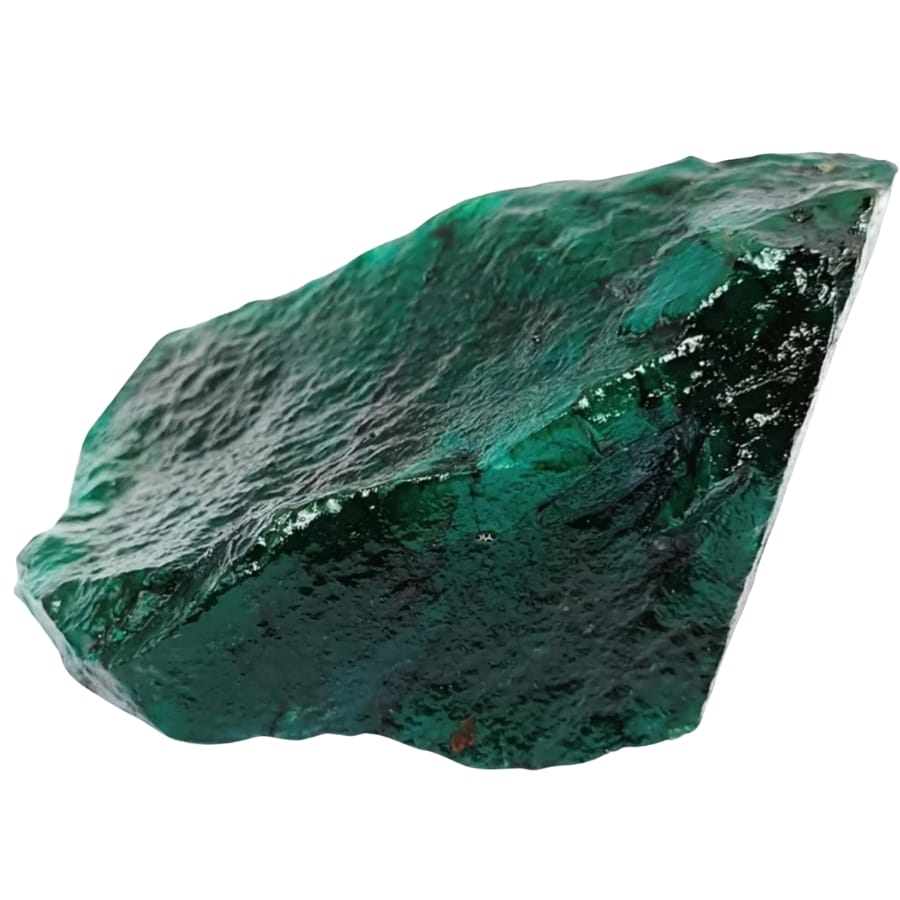Two of the most prized jewels in the world are emeralds and diamonds, each with a distinct charm and beauty. Both stones have been used in jewelry and ornaments for ages and have long been praised for their remarkable look.
The two stones have a similar role in fine jewelry but also have distinctive qualities that make them stand out. They are connected in the world of natural wonders by a few other features, though.
We gain a greater understanding of the wonders of our planet and the treasures it contains as a result of exploring these contrasts and similarities.
Emerald vs. Diamond – The Major Differences
We’ll start by discussing their differences. They also share some similarities, but these stand out the most when put side by side.
Appearance – Diamonds are more clear

Although emeralds and diamonds are exquisite jewels, their appearances are significantly dissimilar. Think of a green stone when you imagine an emerald. This green can be anything from a pale, delicate shade to a dark, rich hue.
Even the green of certain emeralds may have a faint bluish or yellowish hue. Emeralds are intriguing because they frequently have inclusions, defined as minute lines, fissures, or other blemishes.
Each emerald has its distinct personality due to these inclusions, which can occasionally resemble tiny branches or plants.
Currently, your mental image of a diamond may be one of a sparkling stone that is crystal clear. This is so that diamonds may provide a dazzling “fire” appearance by splitting light into all the rainbow colors.
As a result, diamonds are prized for their brilliance and clarity, while emeralds are valued for their color and distinctive patterns.
Chemical composition – Emerald is a variety of beryl

The difference in composition between emeralds and diamonds is what distinguishes them from one another. Starting with emeralds, please. They belong to the beryl mineral family.
Chromium, or occasionally vanadium, is the substance that gives emeralds their distinctive green hue. This indicates that beryllium, aluminum, silicon, and oxygen combine a small amount of chromium or vanadium to form the “recipe” for an emerald.
Diamonds, on the other hand, have a far easier “recipe.” They are only composed of carbon. Yes, the same substance makes up charcoal or pencil lead. These carbon atoms are organized in a highly unique way in diamonds, though.
They create a crystal structure that resembles a very precise 3D grid. The unique configuration is what makes diamonds so strong and brilliant.
As a result, diamonds are all about the power of carbon atoms clinging together in a unique pattern, unlike emeralds, which feature a combination of diverse elements with a hint of green-making magic.
Cleavage – Diamonds have a perfect cleavage

When we discuss “cleavage” in gemstones, we are not referring to any current style! Instead, cleavage describes how a gem splits or breaks along specific internal natural lines.
Let’s start by considering emeralds. Emeralds possess what is said to be “imperfect” cleavage. They can break more readily in a particular direction. An emerald can break or chip if you don’t handle it carefully, especially in this area.
Let’s now talk about diamonds. Diamonds contain four different directions of what is referred to as “perfect” cleavage. Although it may seem like they would break quickly, diamonds are very hard.
However, a diamond can split if struck precisely along one of these cleavage lines. Diamond cutters pay particular attention to these lines because of this.
They can shape diamonds into the lovely dazzling stones we see in jewelry without accidentally breaking them by knowing where the cleavage lines are.
As a result, although they have the same cleavage as diamonds, emeralds exhibit different splitting and breaking characteristics.
Color – Emeralds have a distinct green color

Both emeralds and diamonds are stunning in their unique ways, particularly in color. The primary hue associated with emeralds is green. It’s not just any green, either.
A pale, grassy green or a dark forest green is possible. The green can occasionally even veer slightly toward blue or yellow.
The cool thing about emeralds is that minute amounts of other elements like chromium or vanadium cause the gem’s green color. These minor components combine with the other components of the emerald to give it its distinctive color.
On the other hand, diamonds come in a spectrum of hues! Although many people imagine diamonds to be clear or white, they can be a variety of colors. Diamonds come in various colors, including blue, yellow, pink, and brown.
Diamonds’ color results from minute amounts of other elements or unique arrangements of the carbon atoms. For instance, adding a little boron or nitrogen might give a diamond a blue or yellow hue.
Density – Diamonds have a higher density

A density measurement can determine how much mass is present in a given volume of a substance.
The atoms’ internal organization and degree of compactness within each gemstone can be inferred from the differences between emeralds and diamonds’ densities.
Emeralds, a member of the beryl family of minerals, range in density from 2.7 to 2.8 g/cm3. This value points to a specific arrangement of the trace elements that make up the composition of the emerald, including beryllium, aluminum, silicon, and oxygen.
The emerald appears to have some “material” within its volume, but there is some space between its atoms.
Contrarily, diamonds have a substantially higher density, typically 3.5 g/cm3. This is due to the compact arrangement of carbon atoms in its crystal lattice structure.
Because the carbon atoms are connected so densely, diamonds have a higher density, which adds to their renowned hardness.
Formation – Emeralds form in hydrothermal veins

Despite being valuable jewels, emeralds and diamonds have very different origins, literally and figuratively. These origin stories offer an intriguing window into the dynamic processes deep inside the Earth.
Emeralds are created by a process that could be compared to nature’s version of alchemy. They develop in hydrothermal veins, mineral- and hot-water-filled passageways in the Earth.
These veins’ mineral-rich water interacts with the nearby rocks, particularly those that contain beryllium, as it flows through them.
Emeralds start to crystallize when the components come together over time in the presence of specific rocks, such as micaschists or granite. Vanadium or chromium is thought to be responsible for the emerald’s green hue.
On the other hand, diamonds result from extreme heat and pressure. These come from considerably deeper in the Earth’s mantle, where carbon-rich elements are exposed to harsh circumstances.
Carbon atoms form bonds with one another over protracted periods, giving diamonds their distinctive crystalline structure.
Next, in structures known as kimberlite pipes, these diamonds are brought to the surface through severe volcanic eruptions.
Diamonds are enclosed and moved closer to the Earth’s surface when the molten rock quickly cools, where they can finally be found.
While diamonds are created deep below the Earth under extreme heat and pressure, emeralds are created when mineral-rich fluids mix with certain rocks.
Hardness – Diamonds are the hardest

The hardness in minerals and gemstones determines how well a material can withstand scratched. It is a crucial feature because it affects how durable and wear-resistant stones used in jewelry. The distinctions between emerald and diamond in terms of hardness are noticeable.
Even though they are regarded as being hard, emeralds are not the hardest material. On the hardness scale of the Mohs, they fall between 7.5 and 8.
As a result, even though they are strong and appropriate for jewelry, they are rather vulnerable to scratches, especially when compared to harder gemstones.
They must be handled and worn with extra care because harsh contact can cause chips or surface scratches.
In sharp contrast, diamonds are the hardness champs. They are the hardest known natural mineral since they receive a perfect 10 on the Mohs scale. The carbon atoms in a diamond are organized in a crystal lattice that is extremely compact and strong, giving diamonds their exceptional hardness.
Because of their extreme hardness, diamonds may scratch any other mineral, gemstone, or emeralds. This characteristic makes diamonds important for industrial applications where strong cutting or grinding tools are required, in addition to making them desired for jewelry.
Luster – Emeralds have a vitreous luster

“Luster” refers to how light responds to a mineral or gemstone’s surface. It’s the type and degree of shine or light you can see. Both emerald and diamond have distinctive lusters that greatly add to their allure, although these lusters range in type and degree.
Emeralds have a “vitreous” sheen and are renowned for their alluring green color. This indicates that they reflect light similarly to glass does.
An emerald has a bright, sparkly surface that occasionally appears slightly oily when you look at it. The gem’s green tones become even more captivating because to the vitreous sheen, which deepens the color of the stone.
But, when it comes to shine, diamonds are in a class of their own. They have what is referred to as a “adamantine” shine, the brightest a stone can be. This explains why diamonds appear fiery and sparkling.
Their distinct crystal structure disintegrates light into its component colors, producing the play of colors known as “fire.” The diamond has an unrivaled brightness due to its brilliant presentation and unparalleled transparency.
Hence, diamonds steal the stage with their stunning brilliance and fire-like sparkle while emeralds attract with their glass-like luster and rich green tone.
Price – Diamonds are more expensive

Pricing frequently reflects a gemstone’s intrinsic value, market demand, and degree of rarity. Many factors affect the prices of emeralds and diamonds when we compare them.
Due to their alluring green color, emeralds are highly valued. The most prized emeralds are those with a deep, bright green color and little internal imperfections or blemishes.
Finding such flawless emeralds, however, can be difficult because they frequently have obvious inclusions that lower their value. Prices can be quite high depending on the emerald’s origin and quality, particularly if it comes from a well-known place like Colombia.
The “Four Cs”—Carat, Cut, Clarity, and Color—have a wide range of prices for diamonds. High-quality emeralds are more frequently found than diamonds, but demand for diamonds is much higher, particularly for jewelry and engagement rings.
A colorless diamond with exceptional clarity may fetch exorbitant sums of money. On the other hand, diamonds with obvious flaws or discoloration may be less expensive.
Moreover, market demand is important. Diamonds are constantly in demand due to marketing and tradition, which keeps their prices high. On the other hand, the cost of emeralds is subject to changes in demand and the discovery of new sources.
Streak – Emerald has colorless streak

In mineralogy, the term “streak” describes the hue of the powder that a mineral sheds when rubbed against a rough surface, usually a porcelain plate called a “streak plate.”
This property frequently differs from the mineral’s natural hue, offering a useful hint for mineral identification.
Emeralds are a member of the beryl family, and regardless of the intensity or shade of the green in the real gemstone, when tested for the streak, they typically leave a white or colorless streak.
With the vivid green tint we associate with emeralds, this may seem odd, yet it is a characteristic of this mineral.
Because they are made entirely of carbon and are often transparent to white, diamonds produce a white or almost colorless streak. This is in keeping with the composition and structure of their crystalline structure.
It’s important to keep in mind, too, that due to their value and risk of damage, gem-quality stones like emeralds and diamonds are not normally subjected to streak testing.
Instead, streak tests are utilized more frequently with unidentified, less-valued minerals.
Diamond vs. Emerald – The Similarities
We’ll discuss how red diamonds and rubies contrast, then contrast again. Even though certain minerals are more similar than different, it’s essential to understand this knowledge.
Conductivity – Emeralds and diamonds don’t conduct electricity

“Conductivity” describes how well something can transmit energy through it. Consider it similar to a playground slide. Some slides are incredibly smooth, allowing you to descend them rapidly.
Specific slides could be lumpy or sticky, which would slow you down. Electricity may readily flow through something with high conductivity, similar to that smooth slide.
When we compare the conductivity of emeralds and diamonds, we find they are both precious stones. Diamonds are excellent heat conductors, especially the ones that appear clear or somewhat blue.
Hence, a natural diamond will rapidly feel cold since it draws heat away from your skin. On the other hand, diamonds are often not good electrical conductors unless they have specific impurities or flaws.
Emeralds don’t naturally transmit electricity well, just like diamonds do. But, if the emerald contains minerals or other materials, it may alter how it responds to electricity.
As a result, the electrical conductivity of diamonds and emeralds is comparable because electricity normally cannot quickly move through either of them. They both seem to have a playground slide that is a little difficult for electricity to down.
Fluorescence – Both diamonds and emeralds have fluorescence

Have you ever seen something glow under a specific type of light, such as how some stickers or posters glow when exposed to a blacklight?
Fluorescence is the name for that cool light. Let’s now discuss how this applies to diamonds and emeralds.
Emeralds and diamonds are also capable of having this fantastic fluorescence. They might emit a visible glow when exposed to ultraviolet (UV) radiation, a light our eyes cannot see. They seem to possess an ability that only manifests when the correct circumstances exist!
Some diamonds may glow blue, yellow, or even another hue in UV light. Certain substances found inside the diamond are to blame for this. Emeralds can also fluoresce, frequently emitting a reddish or pinkish glow.
The organic components frequently trapped inside emeralds are why they glow this way.
Location – You can find emeralds and diamonds worldwide

Both emeralds and diamonds are like undiscovered gems found deep within our planet. It resembles a large-scale worldwide treasure hunt because many locations hold these priceless stones.
The location of these rocks can reveal information about their geological past. These are the best places to go rockhounding to locate emeralds and diamonds. Rockhounding is a well-liked activity.
In terms of diamonds, they can be located all over the world. Africa has some of the most well-known locations, including Botswana, South Africa, and Namibia. But diamonds aren’t only found in Africa. Large diamond mines are also present in Russia, Canada, and Australia.
Emeralds have specific locations on the map as well. Colombia, a country in South America, is well known for its vivid emeralds. Other prime areas where emeralds are discovered include Brazil and Zambia.
Thus, when you consider the origins of diamonds and emeralds, they are comparable to the Earth’s hidden gifts that are dispersed around the globe.
To increase your chances of finding diamonds and emeralds, read our tips on where to find crystals nearby.
Both diamonds and emeralds remind us that our planet’s surface conceals some fairly fantastic surprises, even though they may have developed differently and at various depths.
Magnetism – Neither Diamonds nor emeralds are magnetic

Certain materials possess a superpower called magnetism that allows them to attract or repel magnetic fields.
Magnetism is at work when you use a compass or play with refrigerator magnets. Let’s now talk about the magnetic properties of diamonds and emeralds.
First off, neither diamonds nor emeralds are particularly magnetic on their own. In other words, a conventional magnet wouldn’t be able to take up a diamond or an emerald. They would only remain still, showing little interest in the magnet.
Yet, occasionally, microscopic fragments of other substances, such as minuscule flecks of iron, may be present inside diamonds or emeralds.
The diamond or emerald may exhibit a very little amount of magnetic activity if those substances are magnetic, but this is not a property of the gemstone itself. It’s a result of the tiny components inside.
So the interesting similarity between diamonds and emeralds is that they both typically lack that superpower of magnetism.
Instead, they glitter and shine in their own distinctive ways and are not drawn to magnets. It serves as a gentle reminder that not all gems require magnetism to be alluring.
The Easiest Ways To Tell Emerald and Diamond Apart

If you consider multiple qualities, it may be simple to distinguish between diamond and white sapphire. Finding out what makes someone unique is enjoyable. Despite the fact that they have some similarities, you should be aware of a few significant variances.
Look at the color
Emeralds are renowned for having stunning green hues. The first hue that comes to mind when you think about emeralds is always green, whether it be a pale shade or a rich, deep green.
On the other hand, the most well-known characteristic of diamonds is their clarity or lack of color. Despite the fact that diamonds can be any color, including blue, pink, and even brown, their most well-known feature is their sparkling clarity.
Check the sparkle
The property known as “fire” in diamonds allows light to split into a spectrum of hues. You might see red, blue, green, and other color flashes when you move a diamond in the presence of light.
Emeralds don’t behave that way. They have a more constant, glossy luster, which highlights their green color.
Observe scratches
The hardest natural substance we are aware of is a diamond, which is exceedingly hard. Because of this, they are incredibly scratch-resistant. Diamonds are harder than emeralds, which are softer.
If you’ve ever been unsure of whether a gemstone is an emerald or a diamond, gently scratching it with something else might provide some guidance. Always treat jewels delicately, though!


